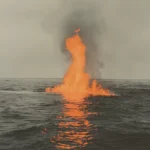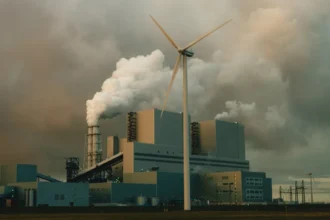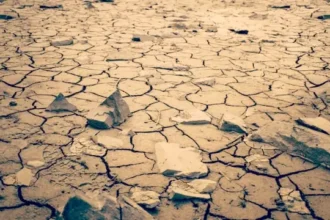War’s Hidden Damage: How Fighting Hurts Our Earth
When you watch news about wars, you mostly see destroyed buildings and people suffering. But there’s another big victim that often gets forgotten – our environment. Wars don’t just hurt people; they poison the earth in ways that can last for decades after the fighting stops.
Scientists studying conflicts in Ukraine, Gaza, and the India-Pakistan border have found alarming evidence of environmental destruction. According to the Conflict and Environment Observatory (CEOBS.org), “severe pollution incidents” from wars can spread harmful chemicals across entire regions, affecting neighboring countries too.
The Climate Cost of War
You might be surprised to learn that military activities create a huge amount of greenhouse gases. These are the gases that make our planet warmer. The Climate Change Performance Index estimates military activities cause about 5.5% of all world greenhouse gases – a shocking number.
- If the US military were a country, it would rank as the 47th largest greenhouse gas producer in the world, according to Earth.Org
- The International Physicians for the Prevention of Nuclear War (IPPNW) reports that all militaries combined would have the 4th largest carbon footprint globally
- Most military pollution comes from their supply chains – things like making weapons and moving equipment
- The Ukraine war alone added 120 million tonnes of carbon dioxide in just its first year.
- Example of Environmental Impact: US nuclear tests in the Marshall Islands released radiation equivalent to 1,000 times the Hiroshima bomb, causing long-term environmental contamination and health issues.
DD News reports the Ukraine war caused 51.6 million tons of greenhouse gases in just two years – with Russian military using more fuel and creating more pollution than Ukrainian forces.
How Wars Poison Land, Water and Air
War doesn’t just make climate change worse. It also directly poisons the places where people live. In Gaza, nearly 39 million tonnes of broken buildings and rubble now sit contaminated with dangerous materials.
| Conflict Zone | Environmental Damage |
|---|---|
| Ukraine | Nearly one-third of protected natural areas damaged; thousands of pollution incidents from destroyed factories; 549 tonnes of CO2 released from single missile attack in Odesa (March 2024) |
| Gaza | 39 million tonnes of toxic debris; sewage contaminating beaches and drinking water; hazardous chemicals in soil |
| India-Pakistan Border | Shared air pollution crisis; toxic haze in cities; military activities contributing to river pollution including Mumbai’s Mithi River |
The European Parliament found that thousands of pollution incidents in Ukraine have damaged factories and power plants, letting toxic chemicals escape into air, soil, and water. ReliefWeb, citing the UN Environment Programme (UNEP), reports Gaza’s sewage plants have stopped working, sending untreated waste into beaches and drinking water, creating a health crisis.
Even in the India-Pakistan region, military activities contribute to environmental problems. According to Scroll.in, both countries face severe air pollution, with toxic haze covering cities. Military operations near the border add to this problem.
The Worst Case: Nuclear War’s Impact
The scariest possibility is what might happen if nuclear weapons were used. Even a small nuclear war could drop world temperatures by 1.3°C – which sounds small but would be enough to cause crop failures worldwide.
- A limited nuclear exchange could potentially starve 2-3 billion people globally
- Nuclear explosions would release radiation that makes land unusable for decades
- The smoke and dust would block sunlight, causing what scientists call a “nuclear winter”
- Military tensions between nuclear-armed countries like India and Pakistan make this a real concern
The Human Cost of Environmental Damage
The damage to nature also hurts people in many ways. In Ukraine, about 70% of people report acute stress symptoms related partly to the environmental destruction around them. One Ukrainian scientist working with the Intergovernmental Panel on Climate Change expressed “depression” documenting both war destruction and climate challenges.
In India, the Mithi River in Mumbai shows how military-related activities can lead to heavy metal pollution, making water unsafe and creating health risks for people living nearby.
What Can We Do?
Wars will likely continue to happen, but understanding their environmental impact is important. When you hear about conflicts, remember there’s more damage happening than what you see on TV – damage that can last for generations.
The connection between war and environmental harm needs more attention. After all, even if the fighting stops, people still need clean water, safe food, and healthy air to rebuild their lives.
Do you think about the environmental cost when you hear about wars? Maybe it’s time we all started paying more attention to this hidden damage.











